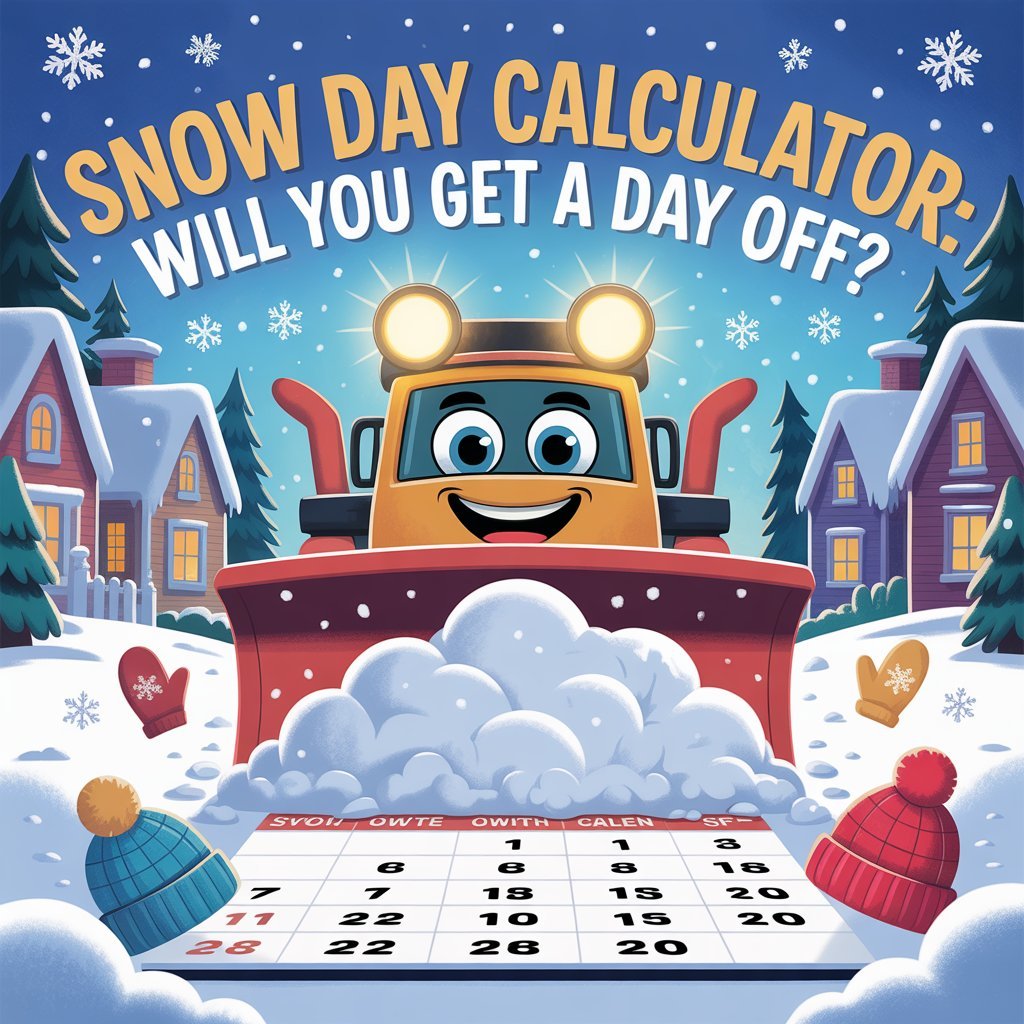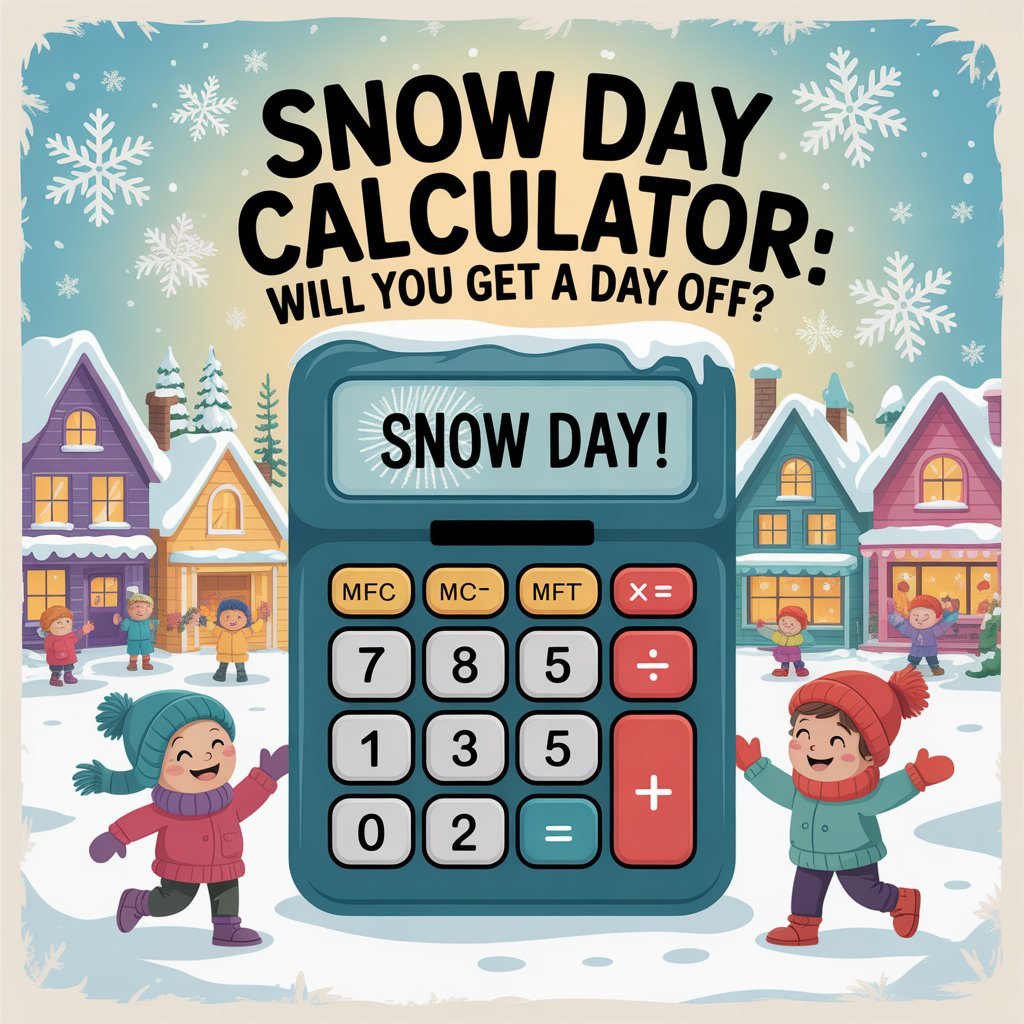As winter blankets the landscape in white, students and workers alike begin wondering: will tomorrow bring a magical snow day? The anticipation of waking up to school or work cancellations is a cherished seasonal tradition, but predicting these closures isn’t just about wishful thinking. Modern snow day calculator have transformed how we forecast winter disruptions, combining cutting-edge meteorological data with local historical patterns to give surprisingly accurate predictions. These digital tools analyze everything from snowfall accumulation rates to wind chill factors, offering personalized estimates based on your specific location and institution’s typical response to winter weather.

While no prediction method is perfect, today’s snow day calculators have become remarkably sophisticated. They don’t just look at basic weather forecasts – they incorporate school district policies, regional snow removal capabilities, and even the timing of expected precipitation. For students anxiously awaiting news of a day off, these tools provide valuable early clues about potential closures. For parents and professionals, they offer crucial planning assistance when winter weather threatens to disrupt normal routines. Understanding how these calculators work and their limitations can help everyone better prepare for whatever Old Man Winter has in store, whether that means an unexpected day of sledding or the need to make alternative childcare arrangements.
1. How Snow Day Calculators Work
These tools process real-time weather data including snowfall rates and temperature drops. Many incorporate school district policies and past closure patterns too.
Advanced versions factor in wind chill and road conditions. However, they only provide probability estimates rather than guarantees.
2. Key Factors Affecting Snow Days
Snow accumulation is crucial; most districts cancel for 3+ inches. Morning storms trigger more closures than afternoon snowfall.
Extreme cold (below -20°F wind chill) often shuts schools. Urban districts may stay open if plows clear roads quickly.
3. Accuracy of Predictions
While helpful, calculators can’t account for last-minute weather changes. Their accuracy depends on current forecast reliability.
Always verify with official school announcements. Predictors are best used as guidance, not definitive answers.
4. Top Snow Day Calculators
Snow Day Predictor offers ZIP-code specific forecasts. AccuWeather SchoolCast provides hyper local updates.
The National Weather Service gives official winter alerts. Some districts post updates on social media before 6 AM.
5. How Closure Decisions Are Made
Safety teams evaluate road conditions for buses and commuters. Icy sidewalks and visibility also factor in.
Districts with strong snow removal may stay open. Rural areas typically cancel more frequently than cities.
6. Fun Ways to “Boost” Your Chances
The pajama reverse trick remains a popular superstition. Some families perform snow dances the night before.
Tracking radar maps helps anticipate storms. Remember these are traditions, not actual influencers!
7. Enjoying Your Snow Day
Classic winter activities include sledding and snowman building. Indoor options feature baking and movie marathons.
Remote workers should prepare backup power. Students can use extra time for creative projects.
Conclusion
Snow day calculators provide helpful estimates by analyzing weather patterns and local history, though they’re not perfect. While 3+ inches of snow or extreme cold increases closure chances, final decisions depend on real-time safety assessments. The most reliable information comes from official school or employer announcements, typically made by 6 AM. Following multiple forecasts and understanding regional policies improves prediction accuracy. Though fun traditions like the pajama trick don’t actually affect outcomes, they add excitement to winter forecasts. When snow days occur, they offer valuable time for rest, family bonding, and seasonal fun. Whether hoping for a day off or preparing for disruptions, staying informed through weather apps and local alerts ensures you’re prepared. Remember that while technology helps predict snow days, nothing replaces common sense when traveling in winter weather. Stay safe and enjoy the winter wonderland responsibly!
FAQ
1. How reliable are snow day calculators?
About 70-80% accurate, but can’t account for last-minute weather or administrative decisions.
2. Does temperature alone cause snow days?
Rarely typically requires extreme cold (-20°F or below) plus other hazards.
3. Why do some schools rarely close?
Urban districts often have better snow removal infrastructure and stricter attendance rules.
4. Can workplaces use snow day calculators?
Yes, especially businesses following school closure patterns or government advisories.
5. When are snow days announced?
Most districts decide by 5:30-6 AM, though some announce the evening before for major storms.
6. How do college closures differ?
Universities rarely close as most students live on campus—only cancel for extreme conditions.
7. Are there workplace snow day calculators?
Some weather apps offer “business impact” forecasts including closure likelihood.
8. Where are most US snow days?
Upstate New York and New England average the most, with some districts canceling 10+ days yearly.

